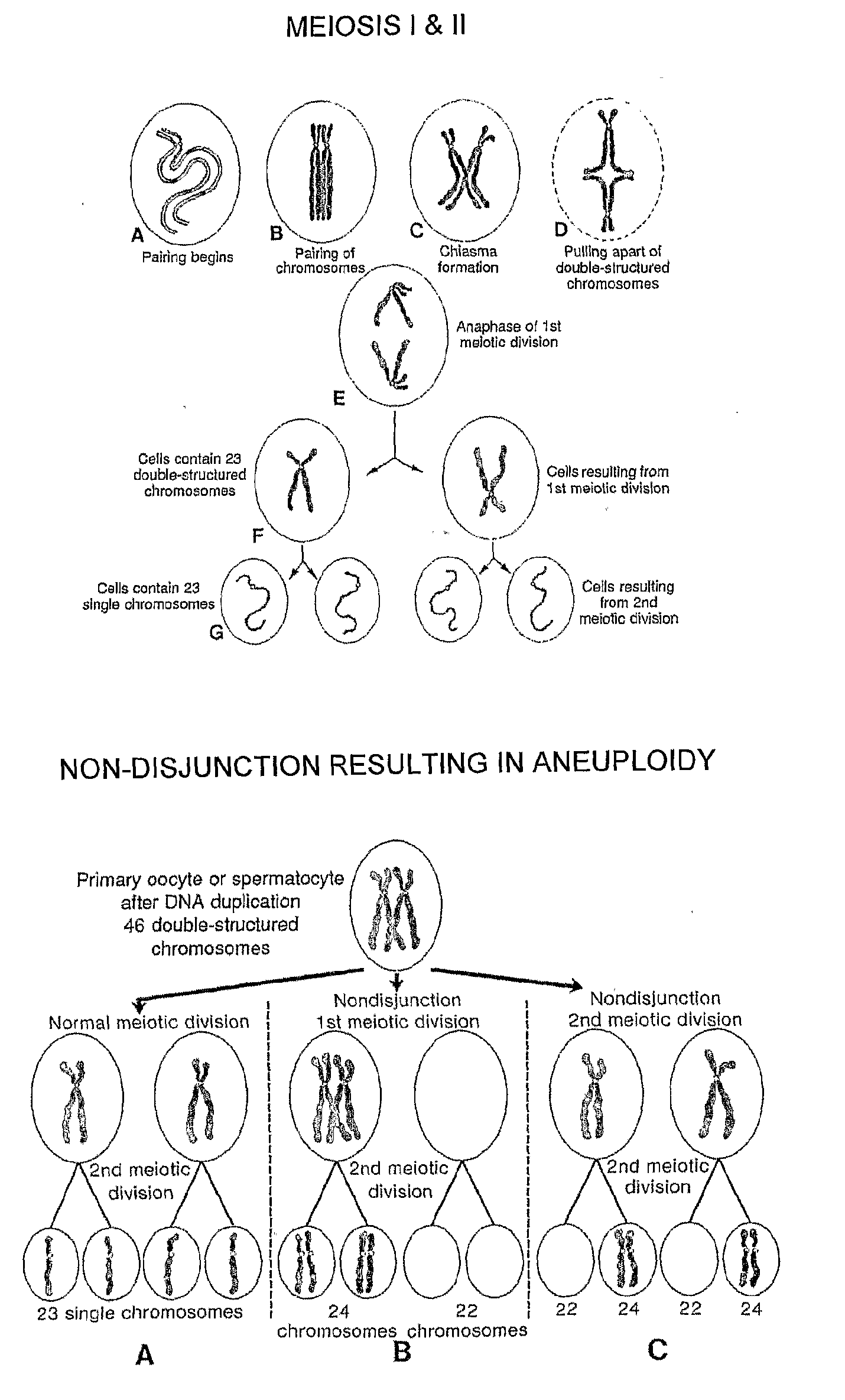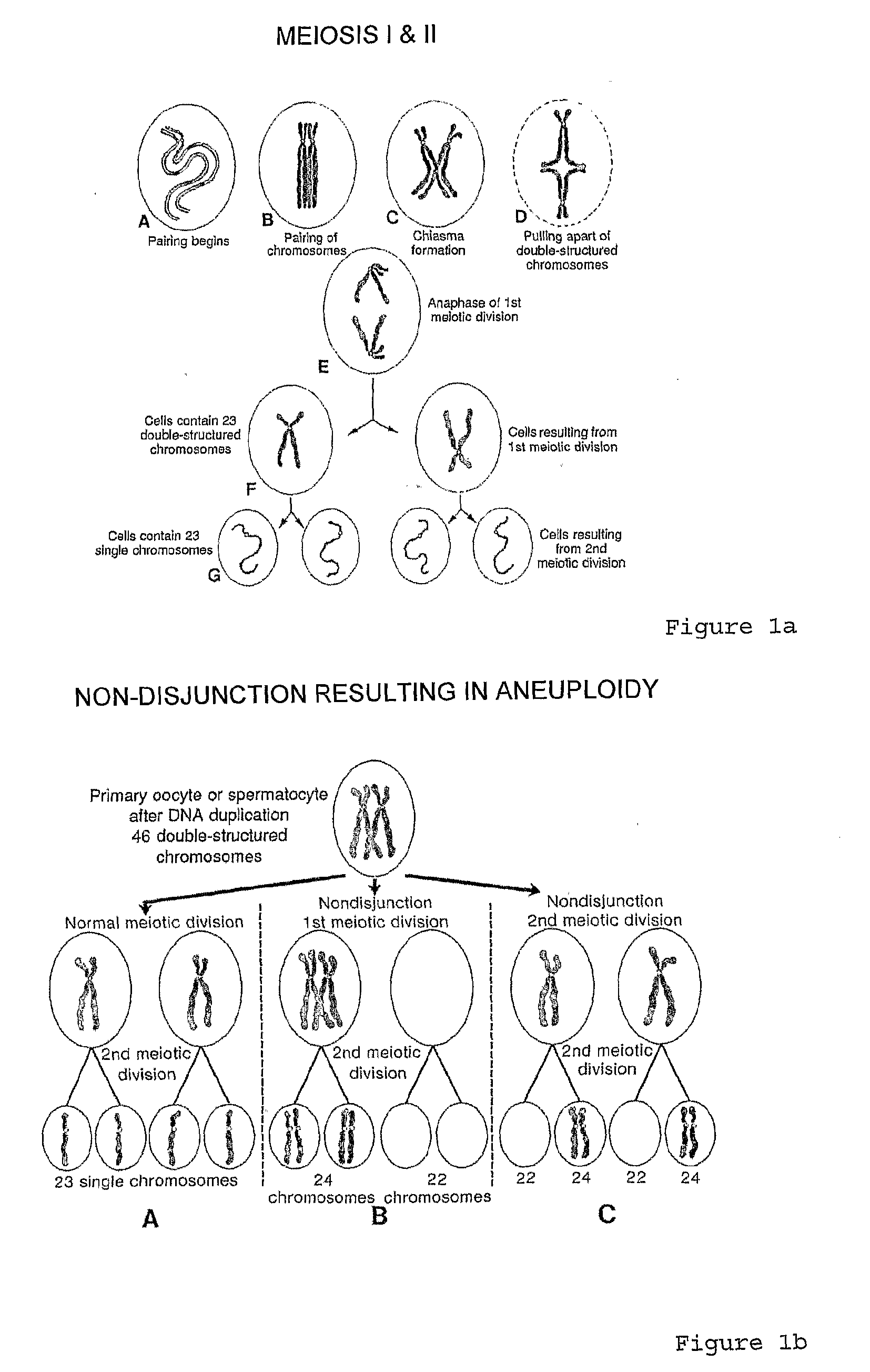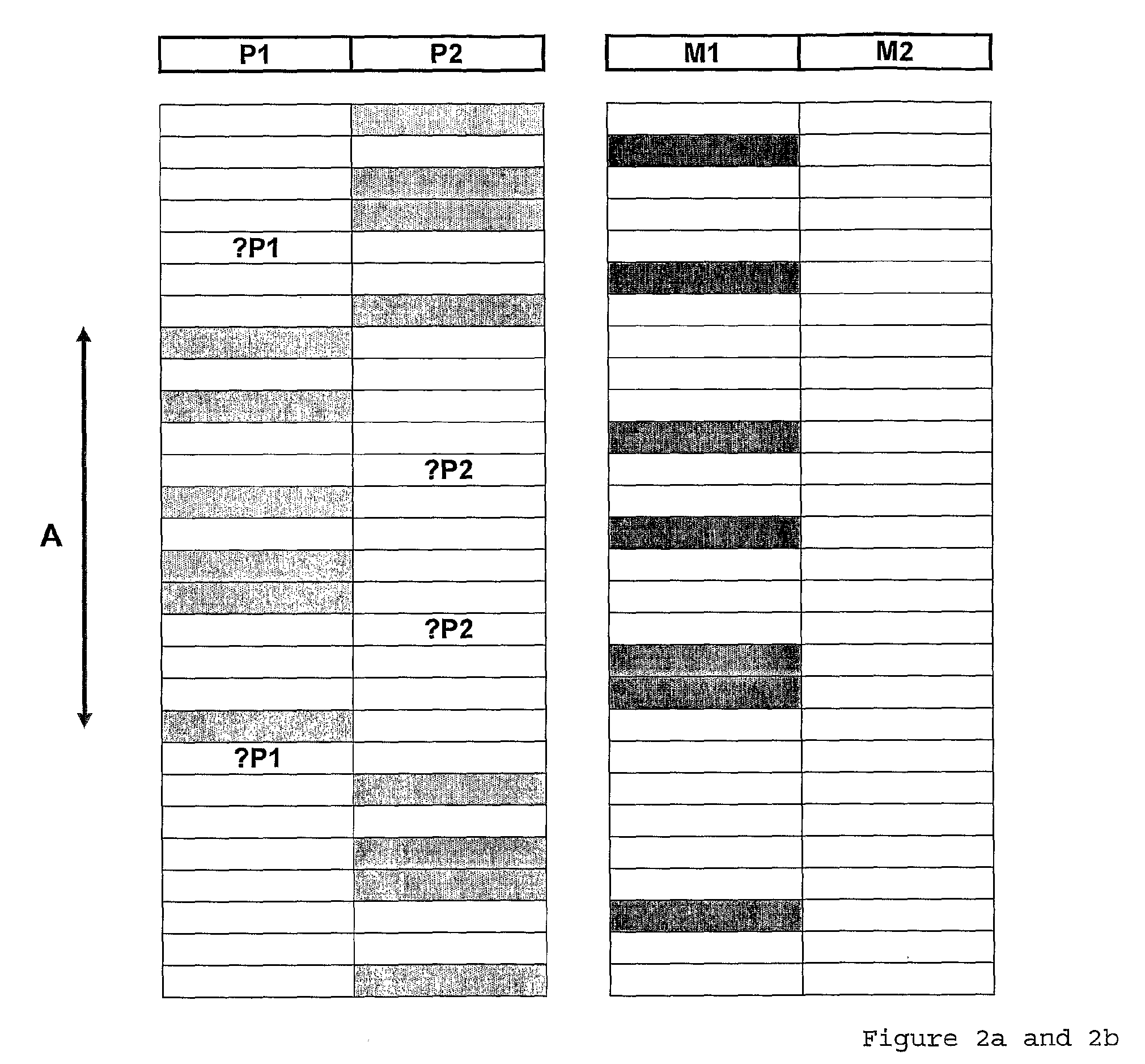Chromosomal Analysis By Molecular Karyotyping
- Summary
- Abstract
- Description
- Claims
- Application Information
AI Technical Summary
Benefits of technology
Problems solved by technology
Method used
Image
Examples
example 1
Theoretical Background
[0117]During meiosis and the formation of gametes, homologous chromosomes pair and recombine resulting in four chromosomes, which on average will consist of two non-recombinant and two recombinant chromosomes. Each of the resulting chromosomes therefore now has a unique SNP haplotype.
[0118]Following fertilisation, each embryo has a unique combination of haplotypes from the non-recombinant or recombinant chromosomes segregated to the two gametes from the two parents. In euploid embryos, with the normal pairs of each chromosome, each chromosome will have a distinct haplotype and the parental origin of each chromosome will be identifiable from the non-recombinant or unique recombinant haplotype. Similarly, trisomy and monosomy will also be detectable.
[0119]Table 1 below shows how SNPs can be classified as informative, semi-informative, or non-informative.
TABLE 1The 16 combinations of parental SNP haplotypes basedon a random distribution of alleles. Informative com...
example 2
Informativity of SNPs and ADO
[0120]In some embodiments when DNA is amplified from single cells, for example, for preimplantation genetic diagnosis (PGD), one of the parental alleles may fail to amplify at random resulting in allele dropout (ADO). Table 2 below demonstrates that where ADO occurs at informative SNPs, half of these will be detected because the apparent test genotype is not possible and therefore the true heterozygous result (“AB”) can be inferred.
TABLE 2Effect of allele dropout (ADO) at informative SNPsMaternalPaternal(M) chr(P) chrTest genotype and chromosome1212identifiedBAAAAA = M2 AB = M1 M1 (BB = AB*)ABAAAA = M1 AB = M2 (BB = AB*)AABAAA = P2 AB = P1 (BB = AB*)AAABAA = P1 AB = P2 (BB = AB*)ABBBBB = M2 AB = M1 (AA = AB*)BABBBB = M1 AB = M2 (AA = AB*)BBABBB = P2 AB = P1 (AA = AB*)BBBABB = P1 AB = P2 (AA = AB*)*For this combination of parental SNPs, the test genotype cannot have two copies of this allele indicating allele dropout (ADO) i.e. failure to amplify one of t...
example 3
Combined SNP Quantitative and Sequence Based Analysis
[0121]If relative quantitation of each SNP allele is achieved, the normal disomic genotype combinations, “AA”, “AB” and “BB”, are supplemented by “A” and “B” in monosomy and “AAA”, “BBB”, “AAB” and “ABB”.
[0122]Table 3 demonstrates the extra information that is available by combining genotyping and quantitation of SNPs. While these possible combination of SNP alleles genotyping may be uninformative, quantitation would identify the chromosome as trisomic even though the parental origin is unknown in the first two examples.
TABLE 3Combined genotyping and quantitation of SNPsMaternal (M) chrPaternal (P) chrTest genotype and chromosome1212identifiedAAAAAAA = Trisomic M1 M2 or P1 P2BBBBBBB = Trisomic M1 M2 or P1 P2AABBAAB = M1 M2 P1 or P2ABB = M1 or M2 P1 P2BBAAAAB = M1 or M2 P1 P2BBA = M1 M2 P1 or P2ABABAAB = M1 P1 + M2 or P2ABB = M2 P2 + M1 or P1BAABAAB = M2 P1 + M1 or P2ABB = M1 P2 + M2 or P1ABBAAAB = M1 P2 + M2 or P1BBA = M2 P1 + M1 ...
PUM
| Property | Measurement | Unit |
|---|---|---|
| Digital information | aaaaa | aaaaa |
| Digital information | aaaaa | aaaaa |
| Digital information | aaaaa | aaaaa |
Abstract
Description
Claims
Application Information
 Login to View More
Login to View More - R&D
- Intellectual Property
- Life Sciences
- Materials
- Tech Scout
- Unparalleled Data Quality
- Higher Quality Content
- 60% Fewer Hallucinations
Browse by: Latest US Patents, China's latest patents, Technical Efficacy Thesaurus, Application Domain, Technology Topic, Popular Technical Reports.
© 2025 PatSnap. All rights reserved.Legal|Privacy policy|Modern Slavery Act Transparency Statement|Sitemap|About US| Contact US: help@patsnap.com



